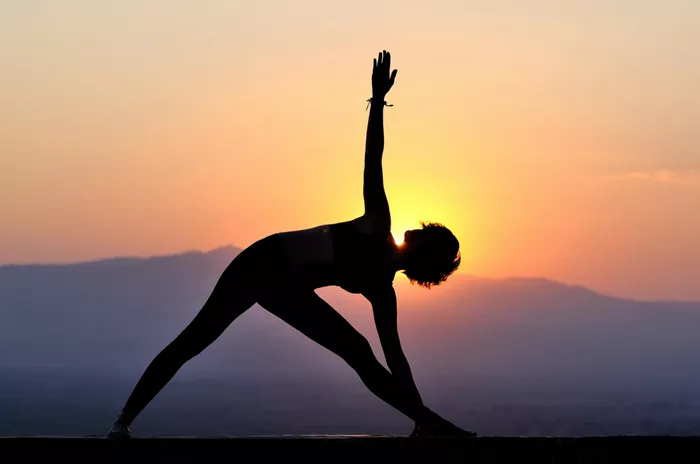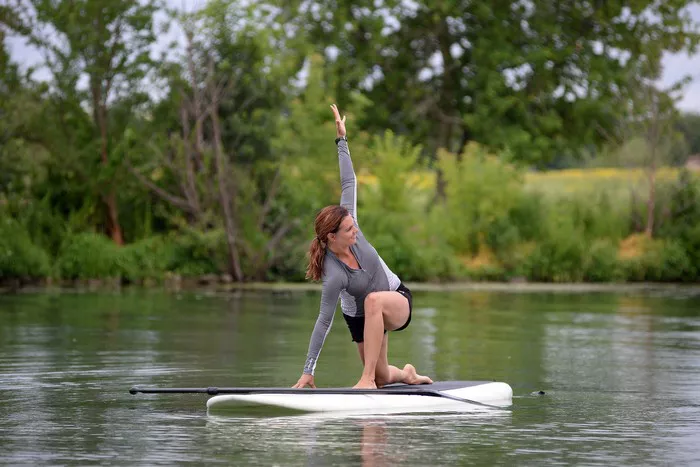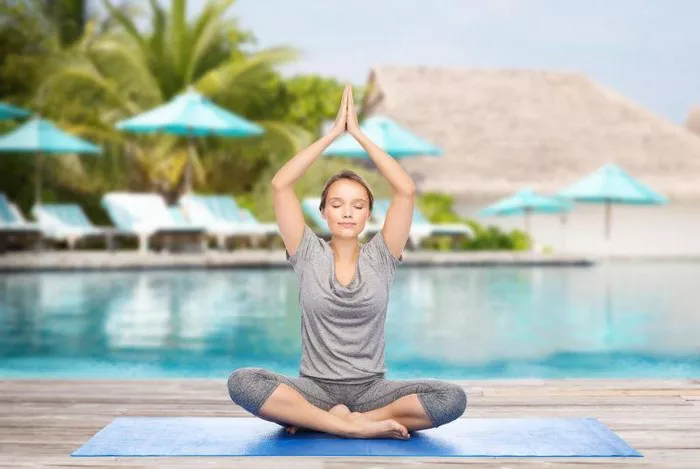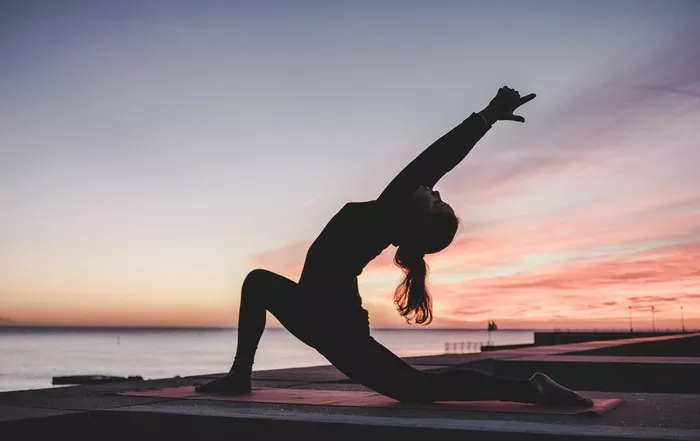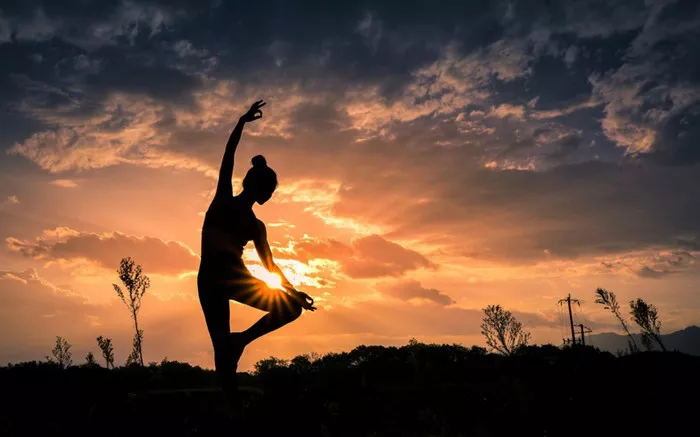Yoga has long been celebrated for its wide-ranging benefits, from improving flexibility and strength to fostering mental clarity and reducing stress. Among the various styles of yoga, Ashtanga Yoga has earned a reputation for its dynamic and vigorous approach. However, one common concern among practitioners is the potential strain that Ashtanga Yoga may place on the knees, especially for individuals with pre-existing knee issues or those new to the practice.
In this article, we will explore whether Ashtanga Yoga is bad for the knees, examining the alignment of postures, potential risks, benefits, and the best practices to safeguard your knees while practicing this form of yoga. By understanding the intricacies of Ashtanga Yoga and how to approach it mindfully, you can make informed decisions that benefit both your practice and your knees.
What is Ashtanga Yoga?
Ashtanga Yoga is a traditional style of yoga that was popularized by Sri K. Pattabhi Jois in the 20th century. It is a physically demanding practice that consists of a set sequence of postures, combined with a specific breathing technique called “Ujjayi” breath, and a focus on drishti (gaze points). The series of asanas (yoga poses) in Ashtanga Yoga are linked together in a continuous flow, creating a dynamic and energetic practice that builds strength, flexibility, and endurance.
The practice is divided into six series, each progressively more challenging. The primary series, known as “Yoga Chikitsa” or “Yoga Therapy,” is often where beginners start. It focuses on building foundational strength, flexibility, and alignment. The second series, “Nadi Shodhana,” works to purify the nervous system, while the advanced series target more complex poses requiring significant strength and flexibility.
Ashtanga Yoga’s structured format and energetic pace can bring a sense of discipline and focus, but it can also be demanding on the body, particularly the knees.
The Knee Anatomy: Understanding the Risks
To understand whether Ashtanga Yoga can be bad for the knees, it is essential to know a little about the knee’s anatomy and the common risks that may arise during physical activities.
The knee is a hinge joint that connects the thigh bone (femur) to the shin bone (tibia), with the fibula running alongside. The knee joint is supported by various structures, including cartilage, ligaments, tendons, and muscles. Cartilage covers the bone surfaces, providing cushioning and reducing friction. Ligaments stabilize the knee, while tendons attach muscles to bones, allowing for movement.
In Ashtanga Yoga, many of the poses require bending, extending, and rotating the knee joint. Incorrect alignment, overuse, or pushing the body too far can stress the knee joint, potentially leading to pain or injury. The most common knee injuries in yoga involve:
Patellofemoral Pain Syndrome (PFPS): Often referred to as “runner’s knee,” this condition involves pain around the kneecap and can be aggravated by repetitive bending and straightening of the knee.
Meniscal Tears: The meniscus is a piece of cartilage in the knee that acts as a cushion. Twisting or hyper-flexing the knee may lead to tears in the meniscus.
Ligament Strain: Overextending or twisting the knee can strain or injure the ligaments, particularly the anterior cruciate ligament (ACL).
Tendonitis: Inflammation of the tendons around the knee, often caused by repetitive movements or improper alignment.
Can Ashtanga Yoga Cause Knee Injury?
Ashtanga Yoga is inherently demanding on the body, and improper practice can lead to knee discomfort or injury. However, the practice itself does not automatically harm the knees. Much of the risk lies in the practitioner’s approach to the practice and their awareness of the body’s limitations.
Some specific aspects of Ashtanga Yoga that may pose challenges for the knees include:
1. Repetitive Knee Bends
Many of the postures in the primary series involve deep knee bends, such as those found in poses like Utkatasana (Chair Pose) and Virabhadrasana I and II (Warrior I and II). Repetitive bending of the knee, especially when performed incorrectly or with improper alignment, can place undue stress on the knee joint, leading to irritation of the patella or the surrounding structures.
2. Lotus Pose (Padmasana)
The lotus pose is a common seated posture in Ashtanga Yoga. It requires deep external rotation of the hip joints, combined with crossed legs, which can place significant pressure on the knees. This deep external rotation may cause discomfort or strain for individuals with tight hips, leading to unnecessary tension in the knee joint.
3. Jumping Through and Jumping Back
Ashtanga Yoga emphasizes dynamic movement, including jumping through to seated postures and jumping back to a standing position. For some practitioners, the impact of these movements can cause strain on the knee joint, particularly if proper control, alignment, and strength are lacking. Those with weak core muscles or limited flexibility may find these movements challenging and may inadvertently put excessive force on their knees.
4. High-Impact Poses
Certain advanced Ashtanga poses, such as Arm Balances and Handstands, require high levels of strength and stability. While these poses generally do not involve direct pressure on the knees, they may lead to compensation or misalignment elsewhere in the body, which could indirectly affect the knees.
Is Ashtanga Yoga Bad for the Knees?
While Ashtanga Yoga does present certain risks, it is not inherently bad for the knees. In fact, when practiced with mindfulness, proper alignment, and appropriate modifications, Ashtanga Yoga can be very beneficial for knee health. Here’s why:
1. Building Strength and Flexibility
Ashtanga Yoga builds strength in the muscles surrounding the knee, including the quadriceps, hamstrings, and calf muscles. Stronger muscles help support the knee joint and reduce the likelihood of injury. Additionally, the practice improves flexibility, which allows for better joint mobility and alignment.
2. Promoting Awareness of Alignment
Ashtanga Yoga places a strong emphasis on body awareness and alignment. Learning to properly align the body in each posture can prevent unnecessary strain on the knees. As practitioners become more attuned to their bodies, they can avoid overextension or misalignment that may lead to injury.
3. Knee Rehabilitation
For individuals with knee injuries or conditions, Ashtanga Yoga can serve as an effective rehabilitation tool. Modifying the practice to suit the individual’s condition can help restore function to the knee joint. For example, gentler variations of certain poses can be used to strengthen the muscles around the knee and improve its range of motion.
Best Practices for Protecting the Knees in Ashtanga Yoga
To ensure that your Ashtanga Yoga practice is safe for the knees, here are some key tips:
1. Focus on Alignment
Proper alignment is crucial in any yoga practice, but it is especially important for protecting the knees. Avoid letting the knee move past the toes in poses like Utkatasana and Virabhadrasana I. Keep the knee tracking in line with the middle toe and ensure that it does not collapse inward (valgus collapse), which can stress the joint.
2. Avoid Overextending the Knee
In poses that require deep bending, like Uttanasana (Standing Forward Fold) or Padmasana, avoid overextending the knee joint. Keep a slight bend in the knee to protect the cartilage and ligaments from excessive strain. If you’re new to Ashtanga Yoga or have tightness in your body, it is okay to use props or modify the poses.
3. Use Modifications
If certain poses feel uncomfortable for your knees, do not hesitate to modify them. For instance, if Padmasana is not accessible due to knee discomfort, you can practice a seated position with crossed legs (Sukhasana) or use blocks under your knees to reduce the pressure. In standing poses, use a shorter stance if a longer one causes strain.
4. Strengthen the Muscles Around the Knee
Engage in exercises that target the quadriceps, hamstrings, and calves. Stronger muscles in these areas provide more support for the knee joint and reduce the risk of injury. In Ashtanga Yoga, poses like Chaturanga Dandasana (Four-Limbed Staff Pose) and Adho Mukha Svanasana (Downward-Facing Dog) help build strength in these muscles.
5. Take Your Time with the Practice
Ashtanga Yoga’s fast pace can sometimes encourage practitioners to push themselves too hard. It is essential to listen to your body and practice with patience. If a pose causes pain or discomfort in the knees, it is better to modify or skip it until your body is ready.
6. Consult a Healthcare Professional
If you have pre-existing knee conditions, such as arthritis, tendinitis, or meniscus tears, consult with a healthcare professional before beginning Ashtanga Yoga. A physical therapist or orthopedic specialist can offer personalized recommendations and may suggest modified poses or other interventions.
Conclusion
In conclusion, Ashtanga Yoga is not inherently bad for the knees. Like any physical activity, the key to a safe and effective practice lies in understanding your body, maintaining proper alignment, and practicing with mindfulness. When performed correctly and with appropriate modifications, Ashtanga Yoga can be a powerful tool for strengthening the muscles around the knee joint, improving flexibility, and preventing injury.
However, it is crucial to listen to your body, especially if you have knee pain or existing knee conditions. With mindful practice, awareness of alignment, and proper modifications, Ashtanga Yoga can be an excellent way to nurture your body and support knee health. Remember that yoga is not about pushing yourself to your limits but rather about finding balance, strength, and healing through thoughtful and intentional movement.









